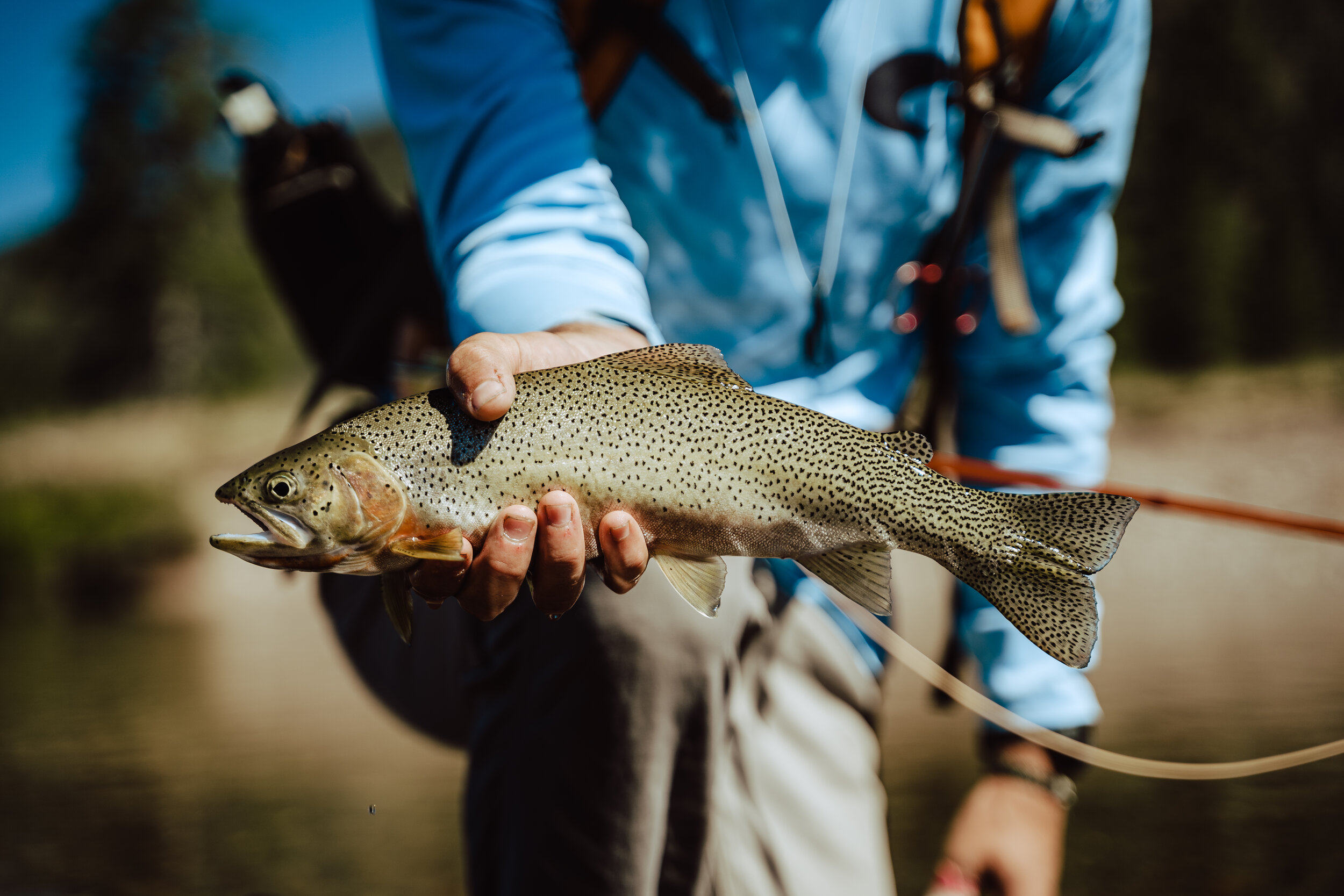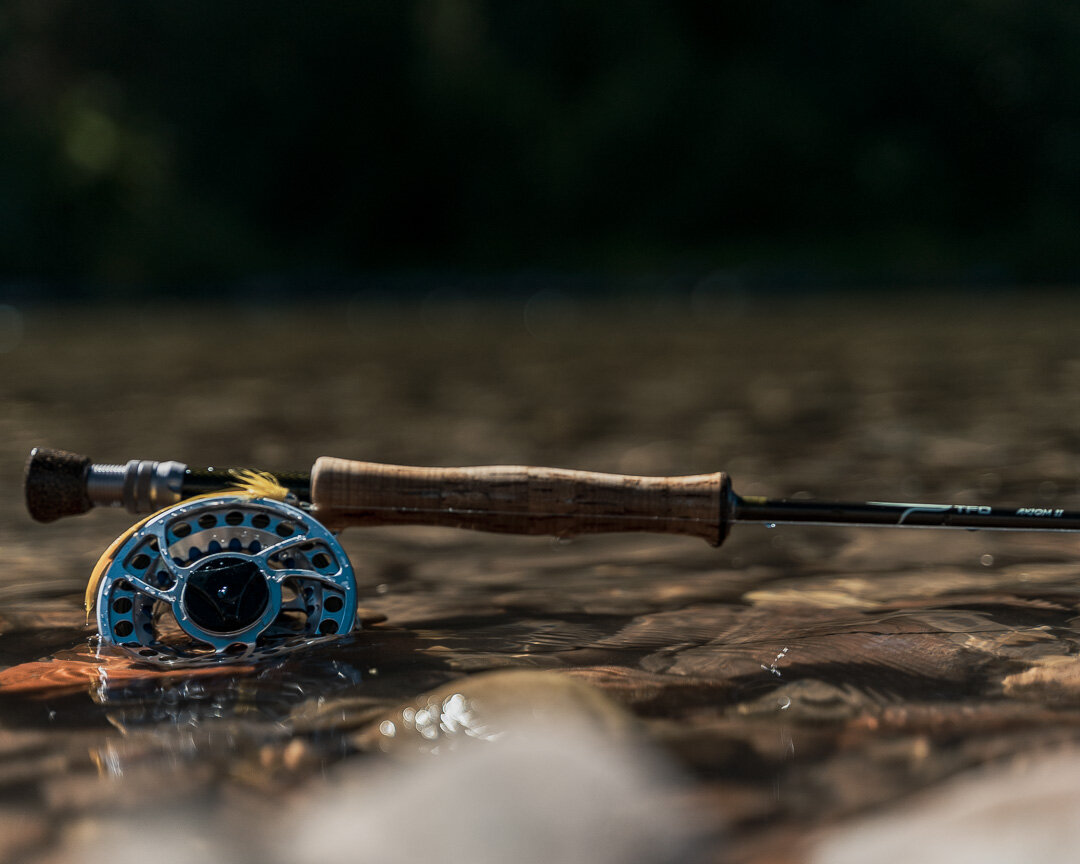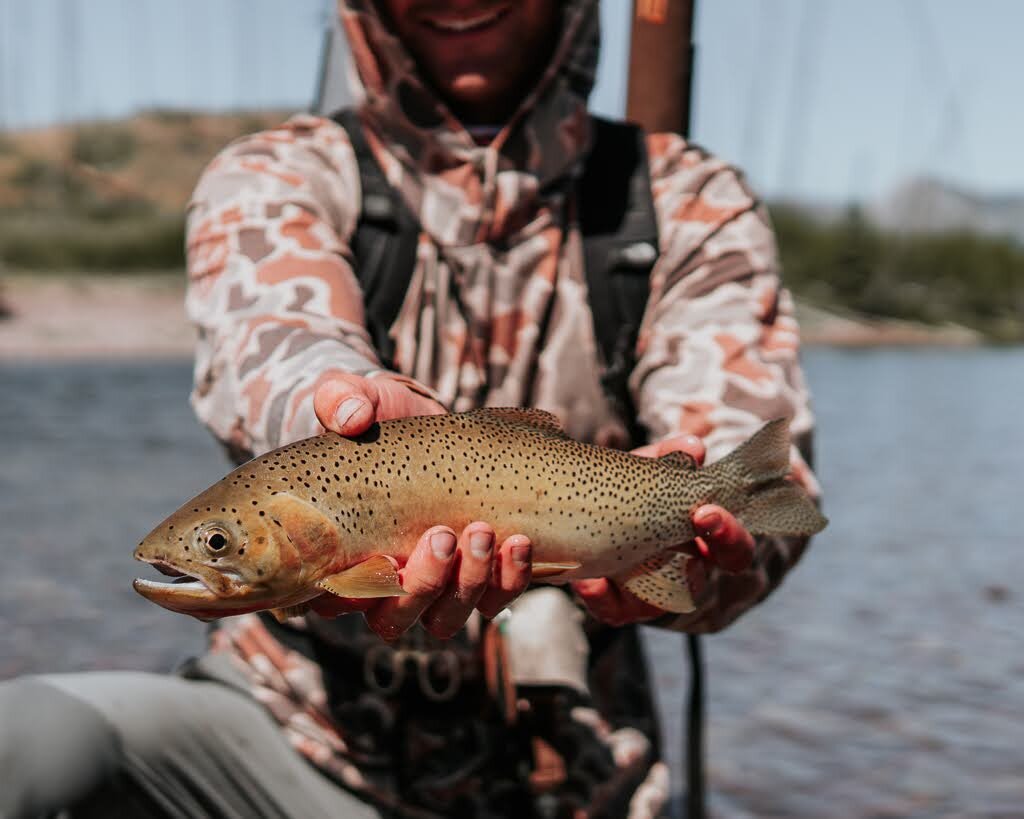The Bob
The highly anticipated trip to the Bob Marshall Wilderness was finally here and nothing could take our minds off the 8 days we would be spending in the backcountry. To give some backstory, myself and a former Alabama fly fishing club exec member, Matt Hagen, piloted this trip with two other exec members back in 2018 with hopes this would turn into an annual endeavor. After communicating with our outfitter Matt Cheff, of Montana Bob Marshall Wildnerness Cheff Outfitters, the plan was to split the trip in half over the course of 8 days. Us four college kids would help the outfitter around camp for 3 days and in exchange he would pack all of our gear to camp, feed us, and more importantly give us 3 full days to fish the various rivers and creeks in one of the most pristine wilderness areas in the lower 48. As basically broke college students we knew this was an opportunity of a lifetime and quickly prepared for the excursion. With any wilderness you can expect certain rules and regulations to keep the area as untouched as possible, The Bob was no different. Only accessible by foot or horse the wilderness does not allow any form of motorized vehicles, tools, or even the use of wheels. Horse packing is the most common form of transportation in and around the wilderness while a string of mules is typically loaded down with necessary gear for the week. The 2018 pilot trip turned out to be a huge success and we learned a lot about the outfitting operation Matt Cheff was running at his Gordon Creek camp. A couple weeks after the conclusion of the trip Matt Hagen reached out to us and was excited to share the good news that we were invited back by the outfitter and were even asked to bring a few extra guys as well. At this point we knew we had developed a good relationship with Matt Cheff and began looking forward to the next year.
Jumping forward to 2020 we knew that this year’s trip was a tossup due to COVID-19. After discussing it with our peers and Matt Cheff, we decided to follow through with our largest group in three years. The group consisted of 18 people all from different backgrounds, most being from the fly-fishing club or club alumni while others were friends of Matt Hagen or myself. The trip began on a crisp Tuesday morning when we were woken up by the sound of horses and mules being saddled in preparation for the 30-mile journey to Gordon Creek camp. We decided to split the group to keep the trail less congested for the ride in and comply with camp capacity rules. The first group consisted mainly of returning individuals (myself included) so we picked our horses, loaded our saddle bags and broke trail a little after 7:30. Group two broke trail roughly an hour after group one, followed by the pack string carrying all of our gear for the week. The 30-mile trek took us through breath taking valleys and mountain passes in both Flathead National Forest and the Bob Marshall Wilderness. While the ride is captivating, to the inexperienced rider spending 8+ hours in the saddle is not as enjoyable as one would hope. Nonetheless we pushed forward and made our way towards camp. Accompanying us on the trip was a retired man by the name of Gary. Gary (81) is a good friend of our head cook, Bob, and would be helping prep meals at the second camp for group two. As we neared camp Gary was unfortunately thrown from his horse, badly injuring him in the process. We quickly wrangled his horse and got Gary to camp to assess the damage as the rest of the group trickled in along with the pack string of mules. Once everyone was at camp and had settled in for a bit Gary voiced the need for medical help. With limited options due to his injuries, it was apparent he would need a medical helicopter to pick him up and take him to the hospital. After a few calls on the satellite phone we prepped the meadow for landing and helped Gary gather his belongings. Roughly 30 min passed and we could hear the humming of the blades making its way through the valley while we stood in the meadow and flagged down the helicopter awaiting its touchdown. As everyone took cover from the dust and debris, two medics jumped out of the helicopter and positioned Gary on a stretcher for safe transport. As the helicopter flew away, we were reminded of how quickly things can turn south in the wilderness. This freak accident was on our minds the rest of the night, but we didn’t let it dampen our spirits as we knew there was still a lot to look forward to.
We all woke up early the next day to the smell of Bob’s famous backcountry breakfast. After scarfing down all sorts of calorie packed food, we split into our groups and went our separate days. Group one would start the week off by working the first day while group two would make its way up Gordon Creek from the Southfork of the Flathead confluence. The groups would alternate fishing and working days to maximize time and space both on the river and in camp. The majority of the work we would complete for the week was in preparation for Matt Cheff’s upcoming elk season. Tasks such as cutting and chopping firewood, setting up wall tents, clearing hunting trails, repairing horse corrals, etc.… was all on the agenda but solely through the use of primitive tools. While the simple tools make work a little more difficult, we still managed to have a good time. At the end of the day we would gather for dinner in the cook’s kitchen and talk about our day as we waited for Bob to ring the dinner bell. Nights were spent by the fire usually with some sort of whiskey in hand as we listened to everyone’s stories and the acoustic background noise from one of the three musically talented individuals on the trip. When the whiskey ran dry and the temperature started to drop, we would call it a night and head to the tents.
The second day we were brutally awoken by the startlingly cold 25 degrees outside. As much as we wanted to stay in our sleeping bags, we knew the quickest way to warm up was to run to the cook’s kitchen to grab a cup of mountain mocha. A mix of black coffee and hot chocolate, the sweet yet somewhat bitter brew, was the favored drink most mornings before breakfast. After a quick feast, we gathered our fishing gear and decided to take the horses 3 miles down the Southfork of the Flathead to another camp. After arriving at what is known as the Bartlett Camp, we tied up the horses and started fishing at the first appealing pool. The group slowly spread out as some of us fish quicker than others. The five of us split into two groups and worked our way down river. A handful of us carried two rods and would alternate between a streamer and dry fly rig based on the section of river we were fishing. Being that the wilderness is fairly remote, the river does not see near as much fishing pressure as some of its neighboring rivers in the state. While many stuck to just throwing various dry flies, I always found myself with a dropper of some sort below either a size 10 chubby chernobyl or size 12 royal wulff. I experimented with droppers but stuck with a rather large stonefly nymph as we were seeing large amounts of husks scattered along the banks. This proved to be successful as I hooked a good portion of my fish on the dropper when throwing my 5wt. The other rod in my quiver was my 7wt with a sink tip line dedicated to fishing the deep holes this section of the Southfork was home to. With the water gin clear, you could see the giant west slope cutthroat swimming along the bottom waiting for an easy meal. My go to streamer for the day was a yellow conehead leech approximately 4 inches in length, I would make a cast up stream in the current allowing the fly to sink low in the water column, as the fly reached the end of the pool I would begin making quick strips upstream and watch as the smaller cutthroat took swipes at the larger fly. After a few casts the larger cutthroat would engulf the fly and the fight was on! We would switch between dry flies and streamers as we worked our way towards the confluence of the Flathead and Burnt Creek catching numerous quality fish along the way. Towards the end of the day, myself along with Matt Hagen and my friend Chad Hoffman, found ourselves further down the river than the rest of the group so we decided to bushwhack to the nearby government trail to try and save some time making our way back to the horses. While we thought this was a good idea at the time, we quickly realized we were not going to make the 6:30pm departure time back to camp. As we made our way through the burnt piles of timber, the eerie silence at Bartlett Camp meant we had no choice but to start the hike back to main camp. Shortly after we started the hike back, we were welcomed by the sight of the outfitter with our three horses in tow. While at the time the experience was a little unnerving, it’s now something we can look back on and laugh about. Dinner was especially great that night as we all had worked up quite the appetite, followed by another night of fish stories from the day and good music around the campfire.
The next day followed routine as group two planned to fish the South Fork of the Flathead and group one was back to working the crosscuts and axes. While I wasn’t with group two for a majority of the trip, we were greeted at the end of the day with a handful of pictures displaying beautiful westslope cutthroat and scenery from the hike. Group one’s second day fishing involved the whole group wading up Gordon Creek. From previous years fishing the rivers around camp it was apparent that Gordon Creek was subject to produce fewer fish on the day but average much larger fish. The story held true as the group caught substantially larger fish than the previous fishing day. I stuck with the two-rod setup throughout the day but primarily threw various streamers to entice the larger fish Gordon’s deep pools were known for. Besides westslope cutthroat, the flathead valley is also known for its Bull trout fishing. While we were just outside of the short season to target Bull Trout, we did see a number of these large fish hugging the bottom of a few deeper pools. In one instance Matt Hagen was utterly surprised by a Bull trout after it began chasing a smaller cutthroat he had hooked into in one of the deeper pools. It was amazing to see how aggressive these predators are and it had me itching to come back during the open season. The group continued to catch larger cutthroat with the largest being right at 20” caught on a heavy conehead sculpin. Various dry flies, hoppers, and streamers were thrown on the day all producing quality fish. During the heat of the day around 1pm, the fishing slowed down substantially. At this point, some of us started working our way back down river and fished the hot spots as we made our way back to camp. The afternoon followed routine as we enjoyed another great meal prepared by Bob and afterwards experienced the clearest night of the week showcasing the millions of stars in our Milky Way. As we were nearing the end of our trip with just one day of work and one more day of fishing, the group was able to knock out the majority of work for the upcoming hunting season leaving only standard clean up and packing for our last day. Our final day in camp was bittersweet as we knew it would be a while before we returned the wilderness but we still had a full day of fishing to look forward to. Four others and myself decided to fish from the Big Prairie bridge and wade the South Fork upstream back to camp. This long wade offers the best balance for both quantity and quality fish, so it was fitting to close out the trip by fishing this section of river. After saddling the horses, we made the quick ride over to the bridge, assembled our gear and began fishing. I started off the day throwing my 5wt with a size 12 royal wulff and size 14 copper john dropper. Within the first 5 min I had hooked into a solid cutthroat in a small eddy behind a large rock on the royal wulff. We worked our way upriver and continued to catch fish on dry flies before eventually deciding to harvest a couple of fish for a riverside lunch. Around noon we made a small fire and cleaned the fish, placing the fresh filets on flat rocks amongst the coals of our fire. Streamside, we partook of the trout giving us the needed calories to finish the long wade back. The day was productive and relaxing and left us reflecting on the great fishing we had throughout the week. We rolled into camp late that afternoon and talked to the other half of the group to hear the results from the day. After dinner, we packed our bags in preparation for the 5am wake up call and hit the hay early.
The last morning began with an early breakfast as we planned to break trail by 7am in hopes to arrive at the trailhead mid-afternoon. We saddled the horses and loaded up the mules to began our ride back to Owl Creek. Unlike the ride in we were determined to limit our travel time and stayed in the saddle for practically the entire duration. We ate our lunch on horseback and powered through the pass making our way out of the wilderness before crossing back into the Flathead National Forest. After about three hours we could see the road below signaling that the end was now literally in sight. We trotted into Owl Creek around 3pm, tied up the horses one last time and bringing our 8-day trip in “The Bob” to a close. Our time in the wilderness is something that will be talked about for years to come and you can be sure our sights are already set for Bob Marshall 2021.
Photos: Chad Hoffman, Conner Grimes, Collin Fuller
























